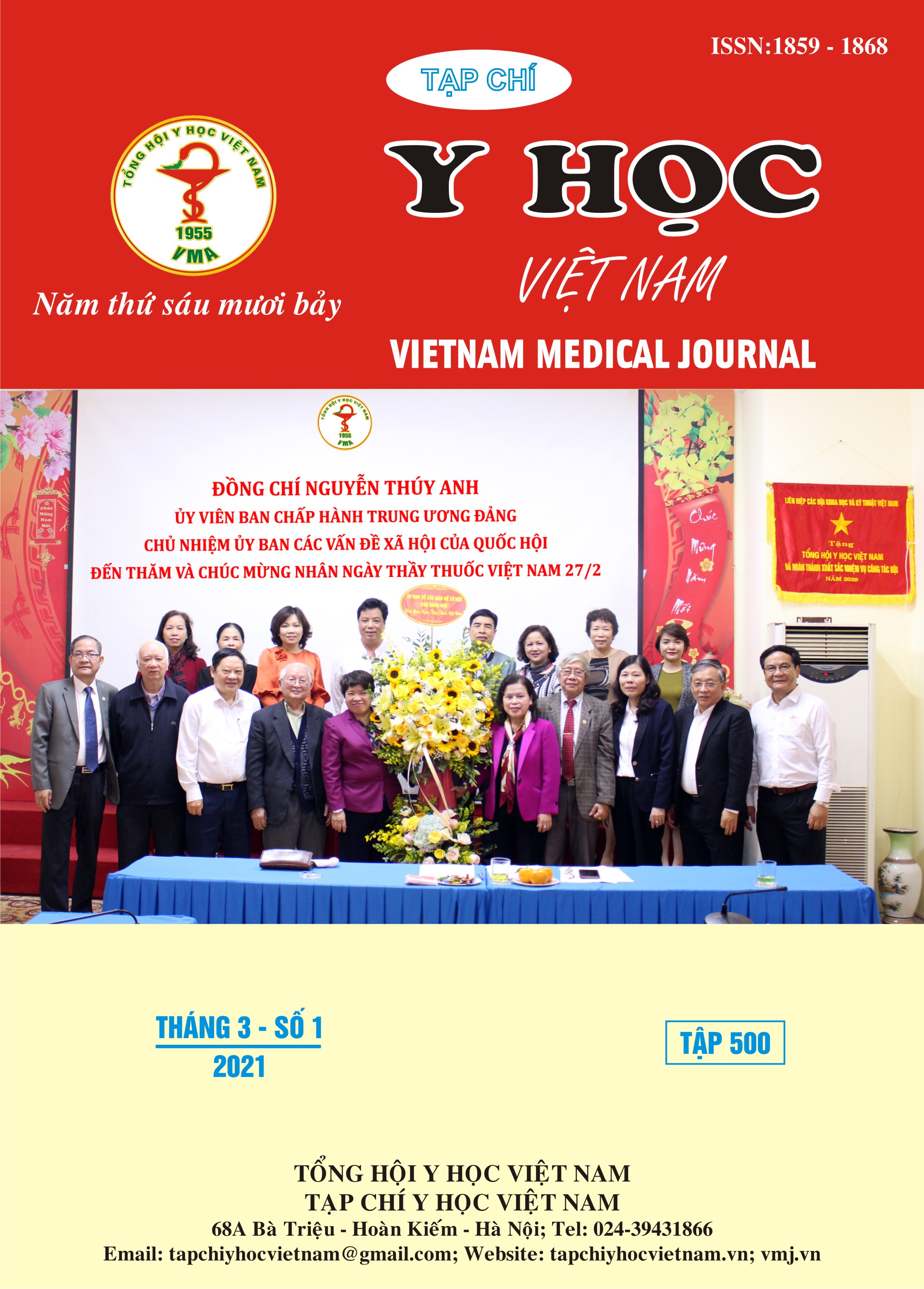COMPLIANCE FOR ANTI-HYPERTENSIVE MEDICATION IN OUT-PATIENTS AT HOAN-MY SAI-GON CLINIC
Main Article Content
Abstract
Introduction: One of the recommendations to increase the treatment effectiveness for hypertension is improving adherence to treatment in order to reduce the complications of the disease. This study aims to record the medication compliance rate of outpatients coming to Hoan My Saigon Clinic for hypertension treatment. Subjects and method: A total of 387 randomized patients were directly interviewed in our study. Clinical information was collected from the hospital’s database using a prepared data collection table. Drug adherence was noted by 2 ways: asking patients directly and indirectly using the MMAS-8 scale. Results: Out of 387 patients, 91.73% reported them-self as taking medication regularly. The average score of MMAS-8 scale in our study was 5.77 (SD: 1.52). The most prominent reasons for not correctly taking the hypertension medication was forgetting (39.28%). Factors which significantly associated with MMAS-8 score included: the patient's age (p <0.01) and achieving of blood-pressure target (p=0.03). In addition, the longer a patient was diagnosed with hypertension, the higher medication adherence. The MMAS-8 score was also correlated with the amount of drug intake, including both antihypertensive drugs and drugs for treating comorbidity (p <0.01). Conclusion: It is necessary to improve knowledge and awareness of patients about hypertension to improve compliance with antihypertensive medication. Themedication adherenceshould be remindedin patients who have not met the blood-pressure target. Young patients, people who were recently diagnosed or who had to take too many drugs were also at risk of poor adherence.
Article Details
Keywords
Hypertension, adherence, antihypertensive medication, MMAS-8
References
2. Ninh Văn Đông (2010). Đánh giá sự tuân thủ điều trị của bệnh nhân tăng huyết áp trên 60 tuổi tại phường Hàng Bông- Hoàn Kiếm - Hà Nội, năm 2010, Luận văn thạc sĩ y học Trường Đại học Y tế Công cộng.
3. Nguyễn Tuấn Khanh (2013). Khảo sát sự tuân thủ điều trị và các yếu tố liên quan của bệnh nhân tăng huyết áp tại Khoa Nội Tim Mạch Bệnh Viện Đa Khoa Tiền Giang năm 2013. Cổng thông tin Y tế Tiền Giang – Sở Y Tế Tiền Giang.
4. Forouzanfar MH, Liu P, Roth GA,et al.(2017). Global Burden of Hypertension and Systolic Blood Pressure of at Least 110 to 115 mm Hg, 1990-2015. JAMA.317(2):165-182.
5. Gee ME, Campbell N, Sarrafzadegan N, et al. (2014). Standards for the uniform reporting of hypertension in adults using population survey data: recommendations from the World Hypertension League Expert Committee. J Clin Hypertens (Greenwich).16:773–81.
6. Pirasath S, Kumanan T, and Guruparan M. (2017). A Study on Knowledge, Awareness, and Medication Adherence in Patients with Hypertension from a Tertiary Care Centre fr,om Northern Sri Lanka. International Journal of Hypertension. Volume, 6 pages. DOI:10.1155/2017/9656450
7. Krousel-Wood MA, Islam T, Webber LS, Re RS, Morisky DE, Muntner P. (2009). New Medication Adherence Scale Versus Pharmacy Fill Rates in Seniors with Hypertension. Am J Manag Care.15(1):59–66.
8. Morisky DE, DiMatteo MR. (2011). Improving the measurement of self-reported medication non-adherence: Final response. J Clin Epidem. 64:258–263.


